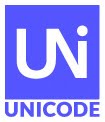Registration is Now Open!
A number of scripts, such as Hebrew, Arabic and Urdu, write their letters horizontally on a page or screen, running right to left. A complication for these scripts is that other characters, such as digits, flow left-to-right, and can occur on the same line, or even alongside other left-to-right text, such as Latin. Text that handles both right-to-left and left-to-right text is called “bidirectional” text (“bidi” in short).How to handle bidi text on browsers and in other software is challenging for both general users and implementers. This webinar will describe the basics with examples. It will be followed by a live question-and-answer period. A more in-depth question and answer session will take place August 13, 2024.
Who? If you are a translator/localizers, localization tooling maker, I18n infrastructure developer, linguist and language researcher, application developer, or a content author, you will want to join us for this webinar. Bring your questions to the people involved for the live Q&A.
When? Tuesday, 25 June 2024 starting at 8am (San Francisco), 11am (New York), and 5pm (Berlin).
Registration is Open Now! Please note this session will also be recorded and available via the Unicode YouTube channel.
Getting Started with Bidirectional Text (Part 1): The Basics of Bidi
Frequently Asked Questions: https://unicode.org/faq/bidi.htmlArticles:
- https://www.w3.org/International/articles/inline-bidi-markup/uba-basics
- https://www.w3.org/International/questions/qa-scripts
- https://www.w3.org/International/techniques/authoring-html#direction
- https://w3c.github.io/i18n-drafts/techniques/authoring-html.en#gsdirection
About the Unicode Consortium
The Unicode Consortium is the premier non-profit open source, open standards body for the internationalization of all software and services.For more than 30 years, the Unicode Consortium has coordinated the efforts of a worldwide team of volunteer programmers and linguists to standardize, evolve, and maintain a global software foundation that allows virtually every computer system and service to help people connect using their native language.
For additional information about Unicode, visit home.unicode.org.
Unicode Resources
- Unicode Technical Quick Start Guide: https://home.unicode.org/technical-quick-start-guide/
- Unicode YouTube Playlist - Overview of Internationalization and Unicode Projects: https://www.youtube.com/playlist?list=PLMc927ywQmTNQrscw7yvaJbAbMJDIjeBh
Adopt a Character and Support Unicode’s Mission
Looking to give that special someone a special something?
Or maybe something to treat yourself?
🕉️💗🏎️🐨🔥🚀爱₿♜🍀
Adopt a character or emoji to give it the attention it deserves, while also supporting Unicode’s mission to ensure everyone can communicate in their own languages across all devices.
Each adoption includes a digital badge and certificate that you can proudly display!
Have fun and support a good cause
You can also donate funds or gift stock

As Unicode, Inc. is a US-based open source, open standards, non-profit, 501(c)3 organization, your contribution may be eligible for a tax deduction. Please consult with a tax advisor for details.

![[image]](https://cdn.statically.io/img/www.unicode.org/announcements/u16-beta-annc.png)
![[image]](https://cdn.statically.io/img/www.unicode.org/announcements/cldr-ballot-box-image.png) The Unicode CLDR Survey Tool is open for submission for version 46.
CLDR provides key building blocks for software to support the world’s languages
(dates, times, numbers, sort-order, etc.) All major browsers and all modern
mobile phones use CLDR for language support. (See
The Unicode CLDR Survey Tool is open for submission for version 46.
CLDR provides key building blocks for software to support the world’s languages
(dates, times, numbers, sort-order, etc.) All major browsers and all modern
mobile phones use CLDR for language support. (See


